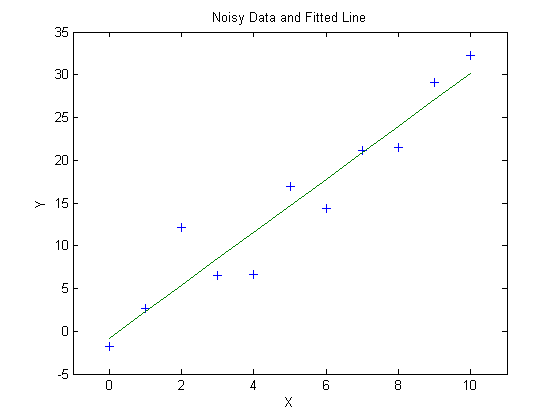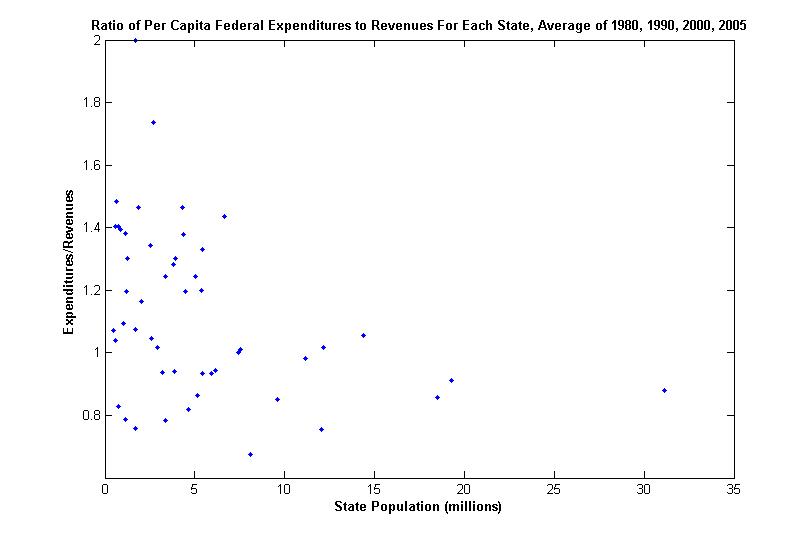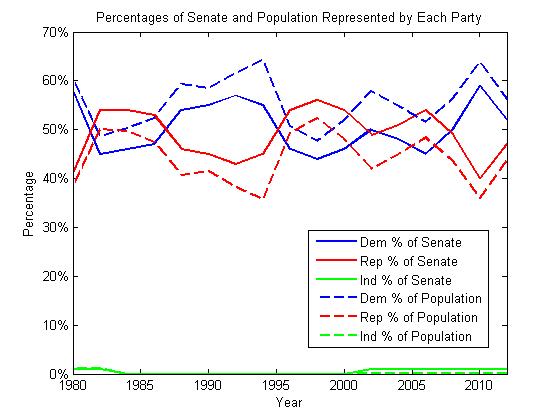Since the beginning of 2010, there have been many devastating earthquakes near large population centers. These earthquakes include a 7.0 in Haiti on Jan 12, 2010, an 8.8 in Chile and Feb 27, 2010, a 6.1 in Turkey on Mar 8, 2010, a 6.9 in Chile on Mar 11, 2010, a 6.9 in China on Apr 14, 2010, a 6.3 in New Zealand on Feb 21, 2011, a 9.0 in Japan on Mar 11, 2011 and a 7.1 in Japan on Apr 7, 2011. These earthquakes have had tragic consequences, especially in Haiti and Japan, where over 220,000 and 10,000 people have died, respectively. This surge of earthquakes in the news has caused many people to speculate about whether the number of earthquakes is increasing and the reasons why. We found data on earthquakes from 1900 to 2010 and will show whether there has been a recent rise in earthquakes or not. Continue reading
Author Archives: Eric Verner
Possible Solutions for the Senate
Over the past five weeks, this blog has presented a variety of shortcomings of the Senate. Among these problems are unequal representation among states, marginalization of minority groups, a filibuster that is too easily invoked, a consistent bias towards one political party, and a disproportionate amount of federal funds and power received by small states. Many political observers have noticed these problems with the Senate, but the question remains of what should be done to fix them. This article will present several solutions to deal with the problems of the United States Senate. Continue reading
How to Do Polynomial Curve Fitting in Matlab
Polynomial curve fitting is a common task for data analysts in many fields of science, engineering and social science. The standard method to fit a curve to data is to use the least squares method. In this method, the coefficients of the estimated polynomial are determined by minimizing the squares of errors between the data points and fitted curve. This method is used to determine the relationship between an independent and dependent variable. The common term regression line is used for a first-degree polynomial. Matlab has a simple function called polyfit that allows an analyst to use the least squares method. In this post, a simple example of polyfit is presented to determine the relationship between two variables in a noisy environment.
Federal Funding and Length of Service in the Senate
According to a report by the Tax Foundation, some states receive more from the federal government than they pay in taxes on a per capita basis, while others receive less. The Tax Foundation contends that the reason for this imbalance is higher incomes in some states and a progressive income tax, which accentuates the revenue differences between high and low income states. There is, however, a relationship between the ratio of federal expenditures to tax revenues and state population. States with small populations tend to receive more money from the federal government than they pay in taxes. This can be explained by the fact that each Senator has equal bargaining power, but an unequal number of constituents with whom to share federal funds and tax breaks. Furthermore, Senators from less populous states tend to have longer term lengths than their counterparts in more populous states, which allows them become the chairmen of committees and obtain even more funds from the federal government, as well as wield more power in favor of their constituents. State population, federal funding and term length are all related and serve to deliver more wealth and power to less populous states.
Republican Bias of the Senate
In posts from recent weeks, I wrote about how the Senate underrepresents citizens from populous states and minorities. However, the Senate has also consistently underrepresented Democratic voters for the past 30 years. Over the past three decades, the Senate has favored the Republican Party. Since 1980, there have been 17 sessions of Congress. Democrats have held the majority in the Senate 9 out of 17 sessions, or 52.9% of the time. However, the population represented by Democratic Senators has been greater than the population represented by the Republicans 15 out of 17 sessions, or 88.2% of the time. Democrats have been underrepresented in the Senate by between 5 – 18.5% every year since 1980. If the Senate were apportioned based on population, Democrats would have held the majority in many more sessions of Congress, which has a multitude of policy implications in areas including environmental regulation, health care, and assistance for the poor. Below are several figures that depict this state of affairs.
Digital Filtering in Matlab
Digital filtering is a widely used technique that is common in many fields of science and engineering. Filters remove unwanted signals and noise from a desired signal. There are many different kinds of filters, including low pass, high pass, band pass and band stop filters. In just the category of low pass filters, there is a large collection of filters that famous engineers and mathematicians have invented, including Hanning, Hamming, Blackman, Kaiser and Tukey windows. In this post, I will show you how to use Matlab’s filter function to remove a high frequency signal from a desired signal.
Revealing the Tyranny of the Minority
“Whereas the Senate in particular has become an obstructive and useless body, a menace to the liberties of the people, and an obstacle to social growth; a body, many of the Members of which are representatives neither of a State nor of its people, but solely of certain predatory combinations, and a body which, by reason of the corruption often attending the election of its Members, has furnished the gravest public scandals in the history of the nation. . . .”
-Victor Berger, from the preamble to the constitutional amendment he introduced in 1911 to abolish the Senate
In last week’s post, I wrote about how the Senate marginalizes minority groups because of the higher proportions of minorities in populous states and white majorities in almost all states. However, the Senate also empowers the minority party in the Senate beyond a reasonable measure. Senate rules dictate that any Senator can speak for an unlimited time about any topic as long as 60 other Senators do not vote to stop the speech. Advocates of the filibuster support the rule to prevent what Alexis de Tocqueville called the “tyranny of the majority.” However, because of skewed representation in the Senate, a group of Senators who represent a small fraction of the country’s population can bring Congress to a standstill and create a “tyranny of the minority” that can stop social progress. Continue reading
Effects of the US Senate on Political Representation by Race and Hispanic Origin
 Last week I demonstrated how the US Senate is unfair to voters in populous states. This week, I will examine how the Senate affects the political representation of racial minority groups. Looking at the map from last week, one can see that most of the least populous states are located in the Midwest, Mountain West, South and Northeast. What three out of four of these regions have in common is a large majority of European-Americans (a.k.a. “White people”). In fact, if you divide all of the states up into the same groups as last week, you will find that the least populous 26 states are 83.8% White, the medium population states are 80.1% White, and the nine largest states are 78.5% White. This distribution of the White population has the effect of marginalizing most minority groups by reducing their representation in the Senate. Continue reading
Last week I demonstrated how the US Senate is unfair to voters in populous states. This week, I will examine how the Senate affects the political representation of racial minority groups. Looking at the map from last week, one can see that most of the least populous states are located in the Midwest, Mountain West, South and Northeast. What three out of four of these regions have in common is a large majority of European-Americans (a.k.a. “White people”). In fact, if you divide all of the states up into the same groups as last week, you will find that the least populous 26 states are 83.8% White, the medium population states are 80.1% White, and the nine largest states are 78.5% White. This distribution of the White population has the effect of marginalizing most minority groups by reducing their representation in the Senate. Continue reading



